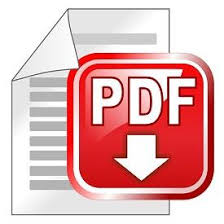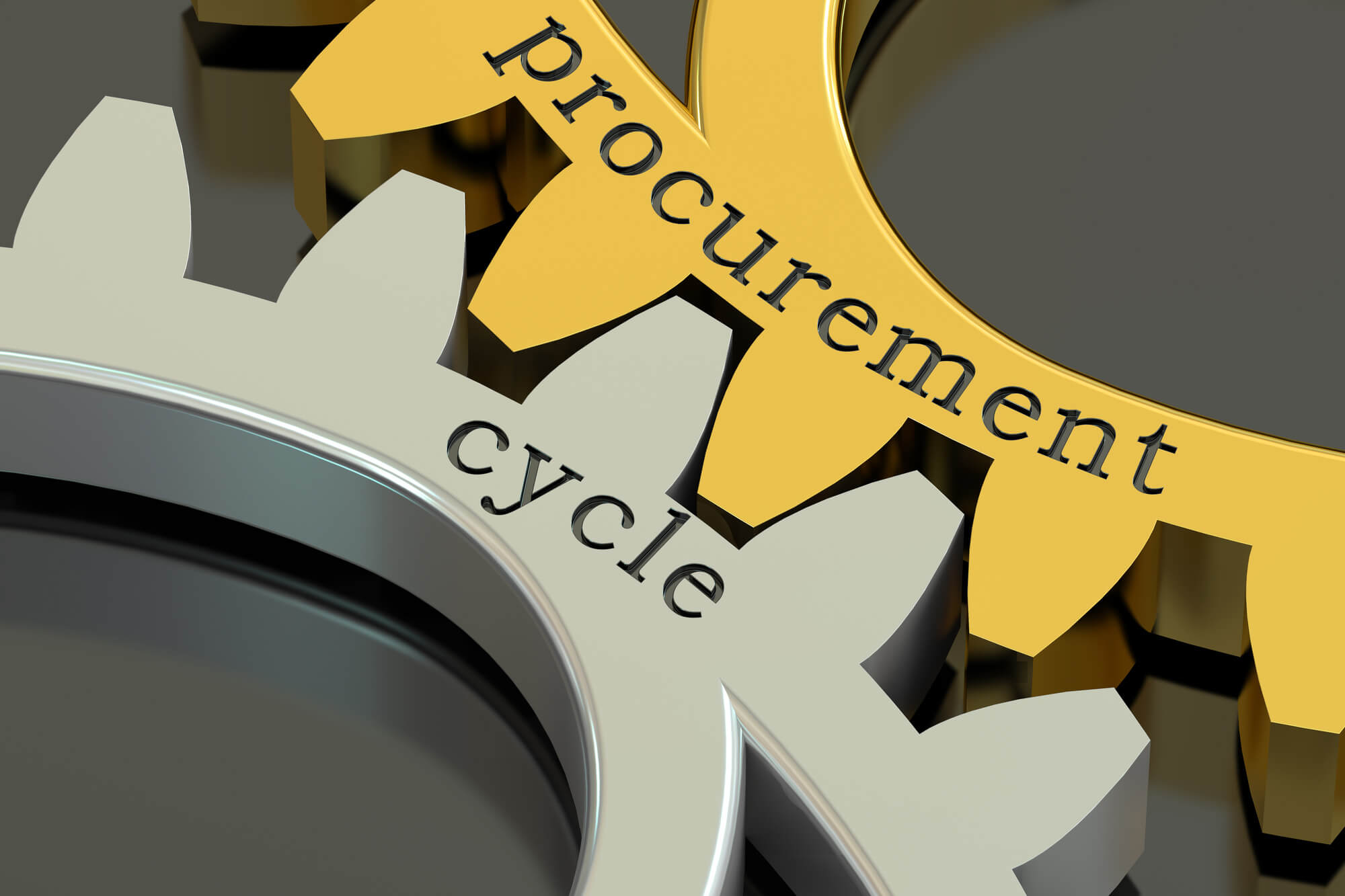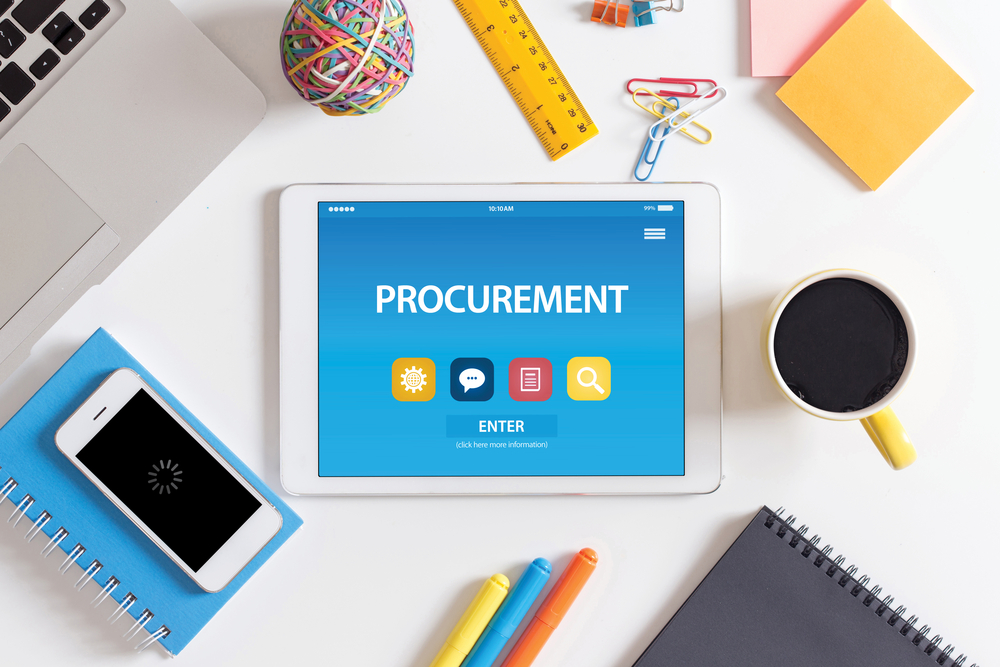Location:
PMKI > PM
Knowledge Areas > Procurement Management.


- Procurement overview
- Procurement & contract
administration
- Negotiation
- Basic contract law
- Common forms
of contract
- The Law of
Contract
- Dispute
management
- Logistics & Supply Chain
Management
- Useful External Web-links &
Resources.
Other related sections of the PMKI:
- Resource management
- Claims and forensic analysis
- Construction and engineering
 Procurement
is the function of acquiring the goods and services
(resources) from outside of the organization, that are
necessary for project delivery. The procurement
cycle for each contract or purchase consists of:
Procurement
is the function of acquiring the goods and services
(resources) from outside of the organization, that are
necessary for project delivery. The procurement
cycle for each contract or purchase consists of:
The procurement planning process is typically done once, or at planned intervals for groups of supply items. Then the rest of the cycle occurs for each supply item and should be scheduled to meet the needs of the project. Some procurement cycles will start very early in the project, for example, the supply of design services and the contracts for long lead time items. Other procurement cycles may not start until near the end, for example, the removal of decommissioned equipment.
There are two basic procurement strategies that will define and constrain the project procurement plan:
In addition to the above, all project procurement decisions must be consistent with the corporate strategy of the organization and its governance objectives. Many aspects of project procurement can affect the organization’s reputation and legal standing. Legal and moral obligations may include:
Plan, manage and control each procurement processes through to contract close. Including the management of project documentation from a procurement and contract perspective.
The planning process has to
Potential suppliers, their likely availability, and the general market should be considered as a part of procurement planning. Some simple requirements may simply needs may only require a couple of telephone quotations and a purchase order. Other requirements may need a sophisticated subcontract to properly control the procurement process.
Requests for Proposals (RFP).
A Request for Proposal is a procurement document that is often used used when criteria beyond cost are to be considered before making an award. RFP's are typically used in procuring highly technical systems and/or complex commodities and/or services. A well designed RFP requires that all parties involved are clear in how the award is to be made and what the end user is looking for in a quality proposal. They often include a scoring matrix to balance different facets of the various offers (see WP1062 for more on designing a scoring matrix).
WP: Statement of Work (SoW). A SOW is a formal document that captures and defines the work activities, deliverables and timeline a vendor will execute against in performance of specified work for a client.
Prs: Stakeholder Relationship Management in the Supply Chain. This paper outlines the critical role stakeholders play in the operation of an effective supply chain and suggests a range of techniques to enhance stakeholder relationship management capabilities.
This process is focused on obtaining bids and proposals (information) from prospective sellers in response to the procurement documents developed by the buyer. It is performed for every procurement and needs to be tailored to the goods or services being acquired. The work-flow for each procurement item is:
Art: There are no free steak knives! The way offers are framed can be designed to distort buying decisions - beware of 'free offers'.
 Procurement
/ contract management is the process of managing
procurement relationships and interactions between the
project team, and the various sellers (service providers /
subcontractors) working for the project. It focuses on
ensuring the procured goods and services are supplied when
needed, to the correct specification and that they comply
with any other requirements, plus ensuring the obligations
of the buyer are fulfilled correctly. There is a financial
management component to contract administration that
involves authorizing and monitoring payments to the seller
to ensure that payment terms are met and the seller is
compensated for work accomplished. Consequently, the
project team needs to be aware of the legal consequences
of any actions undertaken during the management of each
contractual relationship.
Procurement
/ contract management is the process of managing
procurement relationships and interactions between the
project team, and the various sellers (service providers /
subcontractors) working for the project. It focuses on
ensuring the procured goods and services are supplied when
needed, to the correct specification and that they comply
with any other requirements, plus ensuring the obligations
of the buyer are fulfilled correctly. There is a financial
management component to contract administration that
involves authorizing and monitoring payments to the seller
to ensure that payment terms are met and the seller is
compensated for work accomplished. Consequently, the
project team needs to be aware of the legal consequences
of any actions undertaken during the management of each
contractual relationship.
The process needs to be fully integrated with the overall management of the project including work authorizations, performance measurement, quality control, and change control. The contract administration role is an administrative function, other members of the project team are likely to be responsible for processes such as:
The seller has a reciprocal requirement to manage its delivery to the project and for larger contracts will typically have a person in a similar role to the project’s contract administrator.
Negotiation during the contract administration process is normal (see below). Contracts can only be amended by mutual consent therefore agreed change control processes are essential and should be part of the contract, but agreement on the change is still needed. Ideally the negotiations will still focus on Win-Win outcomes that allow the work to be successfully completed. However, it is not uncommon for more robust negotiations to be required.
Where the buyer and seller cannot agree on compensation for change, or sometimes even that a change has occurred: claims, disputes or appeals may arise. If no agreement can be reached using processes defined in the contract, the claim may have to go to mediation, arbitration, litigation or some other agreed means of ‘Alternative Dispute Resolution’ (ADR) - see below for more on dispute management.
The final element is finalizing the project procurement when the work of the supplier is finished, this process is NOT dependent on phase or project completion. It involves completing the administration of the contract and updating all of the project and organization’s systems. Procedures undertaken during closeout may include:
See more on Contract & Commercial Management
 Negotiation
is a strategy of conferring between parties of shared, or
opposed, interests with a view towards compromise or
reaching an agreement. It is, or should be, a process
designed to achieve a mutually acceptable outcome because
there are always two parts to any negotiation:
Negotiation
is a strategy of conferring between parties of shared, or
opposed, interests with a view towards compromise or
reaching an agreement. It is, or should be, a process
designed to achieve a mutually acceptable outcome because
there are always two parts to any negotiation:
Effective negotiations are a collaboration, not a competition. The parties should:
While ideally everyone is focused on achieving a good outcome, different people adopt different negotiating styles. Effective negotiators are aware of these approaches and may choose to their style to meet the needs of particular situations before trying to steer the negotiation towards the style that has the potential to deliver the best outcome all round.
WP: Negotiating and Mediating. Negotiating is, or should be, a process designed to achieve a mutually acceptable outcome, mediation is a facilitated negotiation.
WP: Win-Win Negotiations. A win-win approach to negotiation should be based on a risk/reward standpoint.
WP: Problem Solving. The process of solving problems effectively by generating alternatives and finding better means is at the heart of effective project management. This paper outlines the different techniques that can be applied to solve problems.
Blg: This post is Without Prejudice! Without prejudice communications only apply to legal proceedings (court cases and Arbitration), to prevent the admission of evidence that was offered by one party to the other on a without prejudice basis. Which means, if you want to have a meeting or make an offer that is only valid if it leads to a settlement, or other agreed outcome, the different processes discussed in this post are needed.
Included in this sub-section
- Common forms of contract
- The law of contract (a
very basic overview)
- Dispute management
Contracts seek to balance the risks (and sources of conflict) between the buyer and seller. There are three basic types of contract:
When considering these options, remember risk includes opportunities as well as threats. If the project work is accomplished for a lower than expected cost, the seller benefits in a fixed price contract, the buyer in a cost reimbursable contract. There are a wide range of variations in the way organizations enter into contracts with various names used depending on location and industry, some common options include:
WP: The Point of Total Assumption. Calculating the point above which the seller effectively bears all the costs of a cost overrun on a fixed price ‘incentive fee’ (FPIF or FPI) contract.
 A
contract is: A mutually binding agreement that
obligates the seller to provide the specified
products, services or results and obligates the buyer
to provide monetary or other valuable consideration.
The legally binding nature of a contract means that it
must be reviewed and approved to ensure that the contract
language describes the products, services or results that
are required to deliver the project as defined. All of the
contract requirements are constraints on all the parties.
A
contract is: A mutually binding agreement that
obligates the seller to provide the specified
products, services or results and obligates the buyer
to provide monetary or other valuable consideration.
The legally binding nature of a contract means that it
must be reviewed and approved to ensure that the contract
language describes the products, services or results that
are required to deliver the project as defined. All of the
contract requirements are constraints on all the parties.
Major projects generally need to manage multiple contracts or subcontracts. However, in organizations that undertake this type of work, there are usually procurement specialists that will either lead the purchasing and contracting processes or at least provide specialist support to the project manager. Appropriate management of the contract life cycle can help to mitigate or avoid some risks, by clearly allocating responsibility for managing the risks between the buyer and the seller.
Creating a contract.
Contracts can be complex bespoke documents, pre-printed documents from industry associations, a letter, a purchase order, an exchange of emails, or a simple verbal agreement (although the precise contents of a verbal agreement may be very hard to prove). The elements of a contract are:
To create a contract there needs to be an discernible intent to be contractually bound, plus generally you need 3 out of the 4 out of the first four elements of a contract in place to be able to enforce it, offer, acceptance and then either some initial performance or an initial payment.
In the event either party fails to meet a contractual obligation, the first thing is to write formally advising of the breach of contract requesting rectification. This is not as bad as it sounds - a breach of contract simply means something has not occurred and the rectification should be reasonable and negotiated. If this fails, then it's time to escalate to your legal / contract administration people as appropriate.
Purchase Orders (PO) will create a contract, but simply sending a PO only gets you started. Generally advertised prices are simply an ‘offer to treat’, an old word meaning to trade with you (this may be modified by consumer law to an extent), so without additional action the advertisement is not an 'offer'. For the 'contractual' offer and acceptance to occur you usually need some form of action from the seller, a quote, or an acknowledgement, or notice of acceptance, then you need either your payment (which demands performance) or performance by the seller (which demands payment).
Blg: Liquidated Damages. In Common Law jurisdictions, liquidated damages are a pre-agreed sum of money stipulated in a contract that one party must pay to the other as compensation for breaching a contractual obligation.This judgement confirms the requirement for the estimate to be a genuine pre-estimate.
Many projects end up in various forms of dispute over time, money quality and/or scope. Mosaic, our associates and consultants have extensive experience in the preparation, analysis and defending of contract claims.
WP: Dispute Management in Contracts. Regardless of the issue resolution process adopted for a particular project, the underlying principles of effective issue resolution can be reduced to 6 key points.
However, our preference is to resolve problems before they become major by proactive management. See more on Mosaic's Dispute Management and Support Services.
For more on the practical aspects of contractual dispute
management with a focus on construction/engineering:
See more on our Dispute
Management page:
- Dealing with poor
performance
- Contract &
Commercial Management
- Dispute Management
- General
Concepts for Minimizing Disputes
- Managing
Contract Disputes
- Defective
Work Claims
- Legal
Dispute Processes
Forensic time and cost analysis and the preparation of
forensic reports, are vital to understanding precisely
what has gone wrong with a view to either making, or
defending, claims for extensions of time (EOTs) and/or
delay and disruption (prolongation) costs. The techniques
needed for making and defending delay and disruption
claims are Mosaic's
Claims and Forensic Analysis page
- Forensic analysis
and reporting
- Assessing
Delay and Disruption
- Concurrent
and Parallel Delays
- Referenced
Court Judgements
- Claims & Expert
Witness
Blg: The personal liability of Project Managers is increasing. Disputes are not restricted to business-vs-business, as this post demonstrates project managers can be held personally liable for loss and damage caused by their bad decisions. Download a summary of the Kazzi v KR Properties Global Pty Ltd judgement referenced in this post.
 Logistics
management is a detailed process that involves the
planning, procuring and coordinating of materials which
are needed at a certain time at a particular place for the
production of a task. This includes acquisition and
transportation of the materials as well as providing an
appropriate place to store them safely. Evaluating the
level of supply required at the different stages of the
process is necessary to make sure the needs of the project
are met (ie, there are no holdups). A practical and simple
way to look at logistics, as quoted from The Handbook of
Technology Management, “is as having the right item in
the right quantity at the right time at the right place
for the right price in the right condition to the right
customer”.
Logistics
management is a detailed process that involves the
planning, procuring and coordinating of materials which
are needed at a certain time at a particular place for the
production of a task. This includes acquisition and
transportation of the materials as well as providing an
appropriate place to store them safely. Evaluating the
level of supply required at the different stages of the
process is necessary to make sure the needs of the project
are met (ie, there are no holdups). A practical and simple
way to look at logistics, as quoted from The Handbook of
Technology Management, “is as having the right item in
the right quantity at the right time at the right place
for the right price in the right condition to the right
customer”.
Logistics management is a subset of the larger supply chain management. Supply chain management plans, implements and controls the efficient flow of storage, goods, services and related information from the point of origin to the point of consumption.The various links and points of distribution in a supply chain may include the following:
Supply chain management in business has two focus: inbound logistics for internal functions and outbound logistics for the external flow from the point of origin to the point of consumption. Logisticians are the specialists that focus on inventory management, purchasing, transportation, warehousing, consultation and the organization and mapping of these processes.
CIPS Chartered Institute of Procurement & Supply: https://www.cips.org/